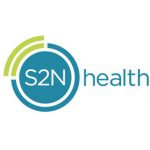Mark Andreessen, the founder of Netscape and regarded investor/entrepreneur, coined the term “Product/Market (P/M) Fit”, which simply means “…being in a good market with a product that can satisfy that market.” According to Andreessen, this state of commercial Nirvana is achieved by iterating on your product, messaging, and targeting until something really clicks. Then, and only then, do you flip the switch to “Scale”. In med tech (vs. tech), there are usually two or more markets to satisfy, namely users of the technology (e.g. doctors, nurses, patients) and those paying for it (e.g. hospitals, health insurers, maybe patients again). There are often two products, too – the gizmo, app or service being sold, and the evidence demonstrating that the product is worth the payers’ money or the users’ effort. You could say that in med tech a “Product/Evidence/Markets (P/E/M) fit is the gateway to scalable commerce.
In our industry, we have become very creative in hitting that all-important “on market” milestone as quickly as possible, making good on long-standing promises to investors (often longer than planned) and sparking celebration among long-suffering employees. For PMA devices we go to Europe, we pursue humanitarian device exemptions, and find first applications with the fastest clinical pathway no matter how small the opportunity or insignificant the benefit. For 510(k) devices, the possibilities for fast-tracking to launch are even more plentiful. But this cleverness and scrambling increases the likelihood P/E/M fit has been bypassed, delayed, or just ignored. This can lead to the Commercialization Doom Loop:

Here are four steps emerging med tech companies can take to find their P/E/M and avoid market purgatory:
1. Gain P/E/M insight as early as possible – learn what you can about product performance and evidence requirements for both user and payer market majorities well before submitting that FDA or CE filing. This early feedback could affect everything if you listen carefully: clinical study plans, product designs, regulatory pathways, financing requirements, even what talent you need. While engaging S2N to help gather all this data is great (shameless plug), most critical is sending all the company leaders into the field to interact with target customers and opinion leaders. This gets everyone on the same page, and helps the company build loyal future customers who will bear with you through early mistakes. In our experience these first accounts are often your best ones for many years to come.
2. Clearly set investor expectations that regulatory approvals and clearances don’t translate into immediate hockey stick sales growth. Initial launch is not the time to hire the seasoned commercial CEO and replace all of your engineers with glossy reps. Use different language to describe your first 6-18 months post approval – deploy terms like “limited launch” and make an overt distinction between that and “full launch”. While not the ticket to instant riches, the first regulatory approvals do drive value in that they reduce the cost of evidence development and provide irreplaceable real-world use experience. Product and study iterations are challenging in our regulated industry, but a window of relative efficiency can open after regulatory approval and before locking down scaled manufacturing.
3. Once “on market”, start small. Limit the size of your initial sales and marketing organization so that you can iterate on messaging and targeting, and ultimately find that repeatable, scalable sales process (assuming you have P/E/M fit). Starting small has a number of benefits – you learn from the market while managing not just your commercial spend, but also containing the costs for your clunky, sub-scale first-gen devices, and minimizing the likelihood and scope of any initial safety or performance issues. If you make the most of the limited launch period, and don’t exit it prematurely, you will be much better positioned for success at commercial scale up (look for our next blog on sales metrics and knowing when to hit the gas).
4. Consider a longer, more meaningful regulatory path. Heresy, right? Regulatory approvals are so seductive and satisfying, but no matter how much you try to contain investor expectations, or how ready your team may feel to progress to the next chapter, the shortest path to market may not be the wisest. Consider alternative regulatory strategies that may take longer initially but provide you with more claims or “E” at launch, such as a de Novo 510(k) vs. a traditional 510(k). The timeframe to meaningful sales could end up being no longer, and even shorter, than Plan A, and the additional market risk reduction could be attractive to commercial stage investors or acquirers.
The road to P/E/M fit is never clear, easy or short in med tech, but the destination can be well worth the trip.
The opinions expressed in this blog post are the author’s only and do not necessarily reflect those of MassDevice.com or its employees.


